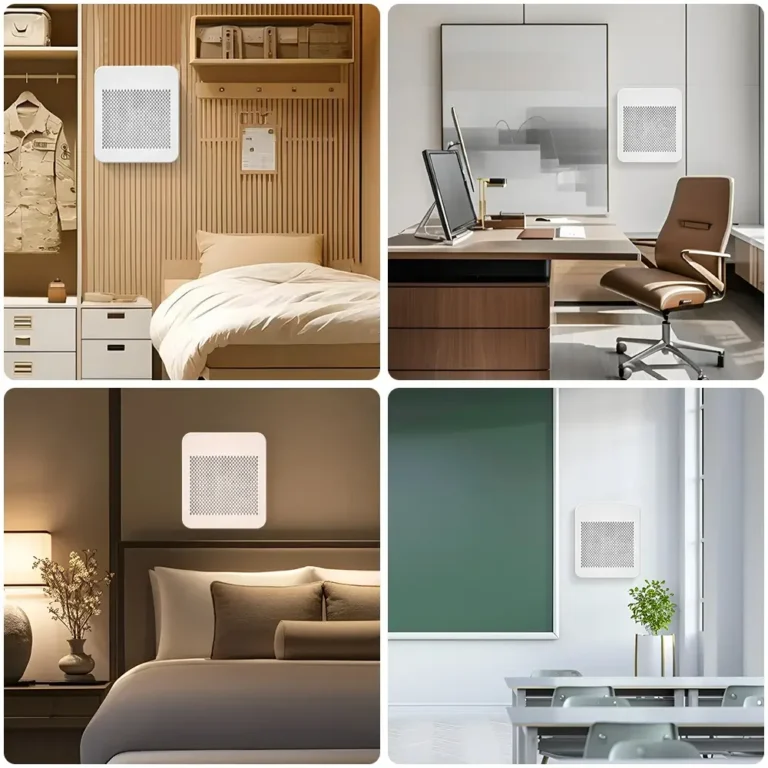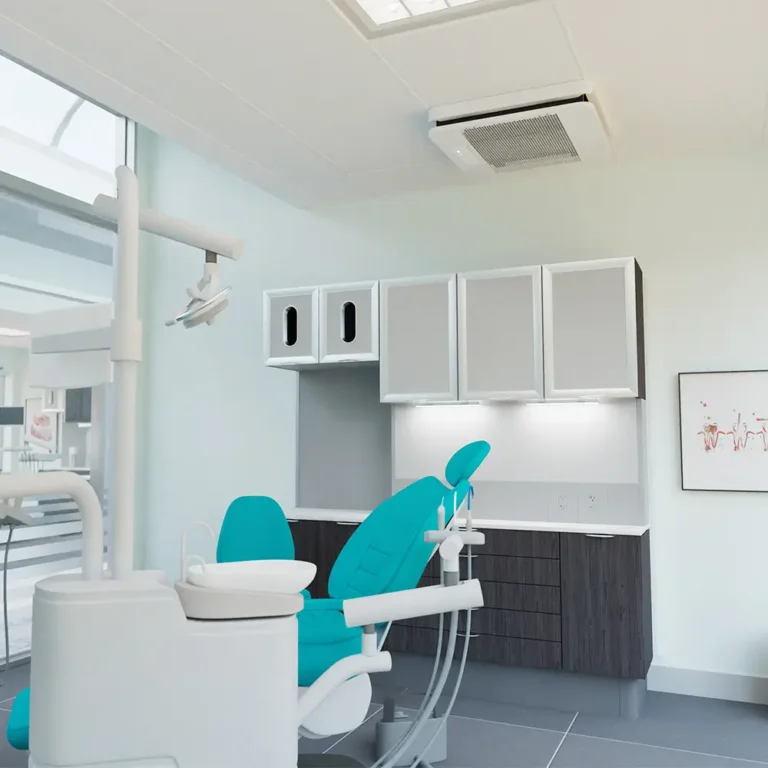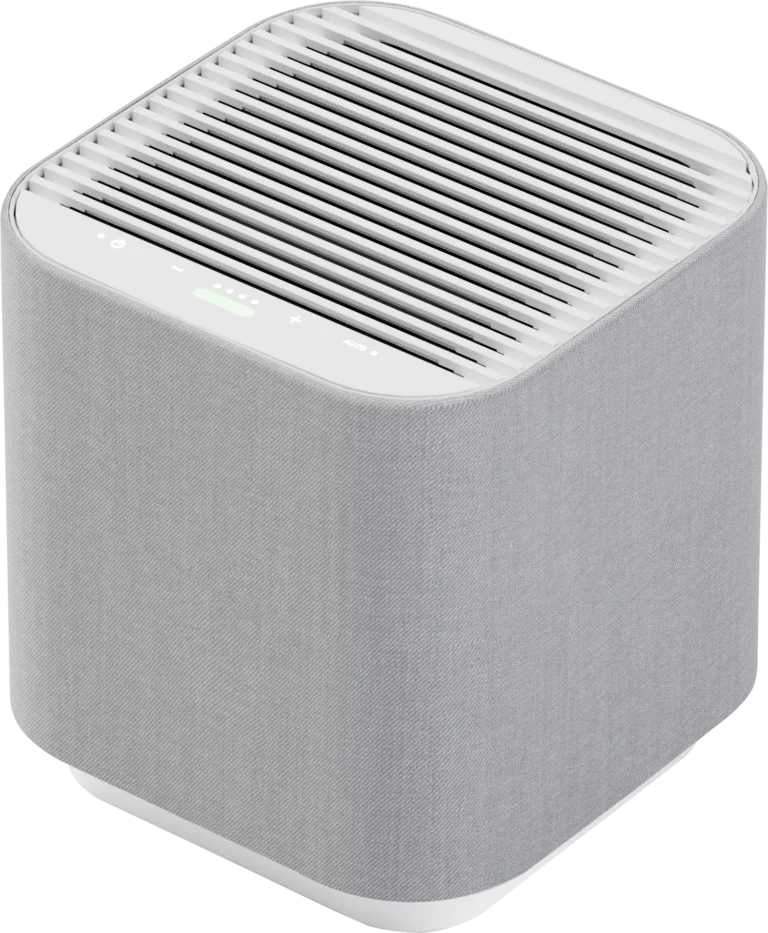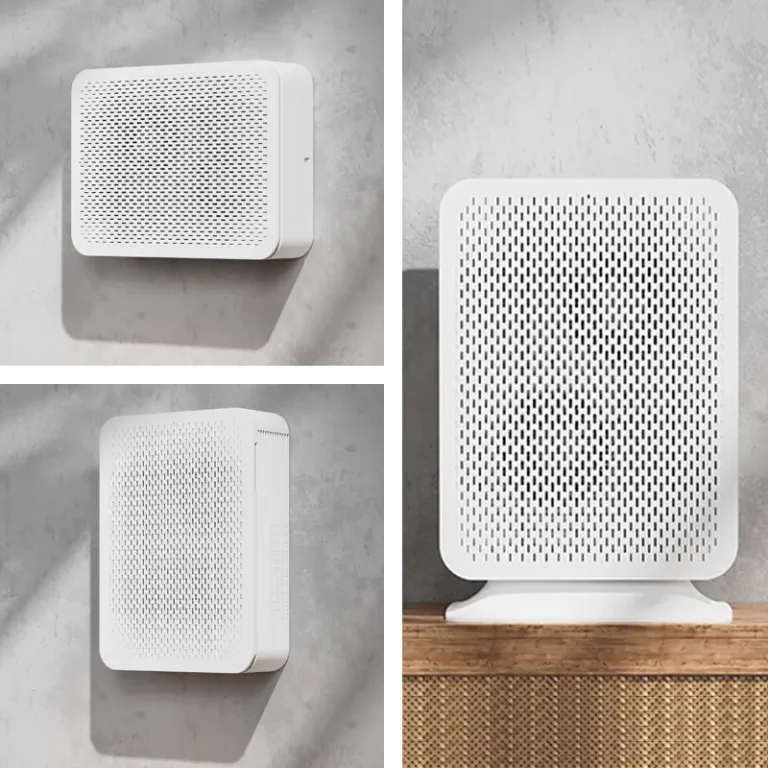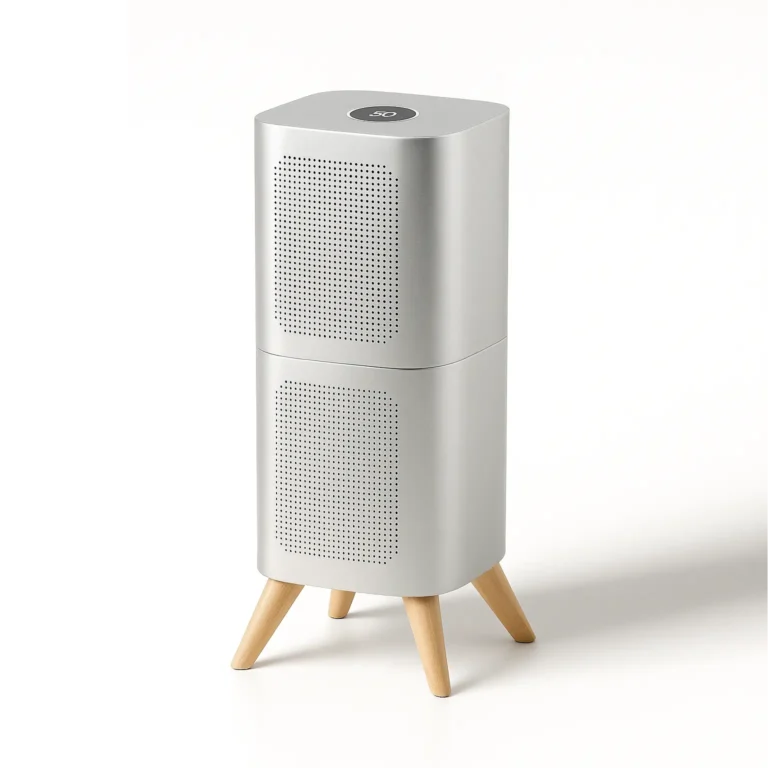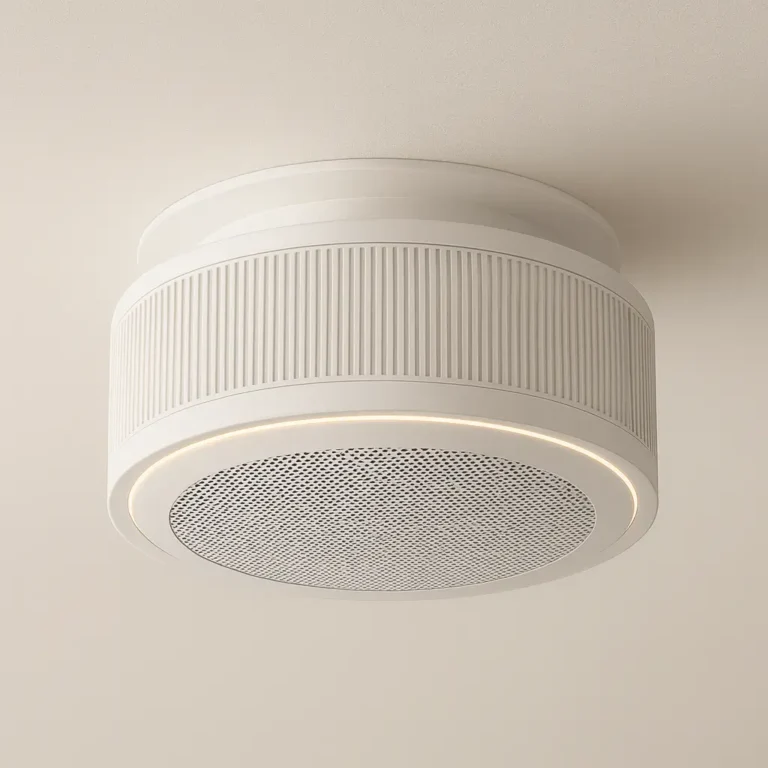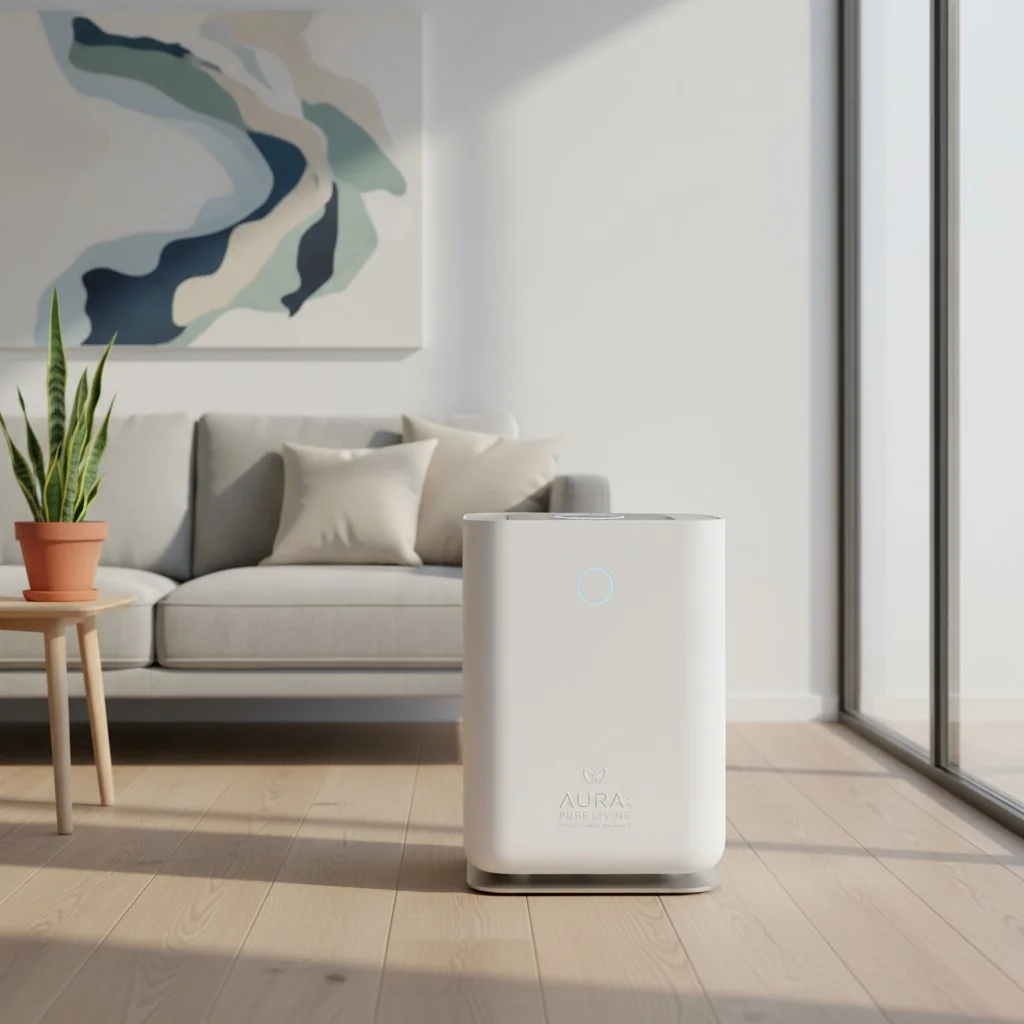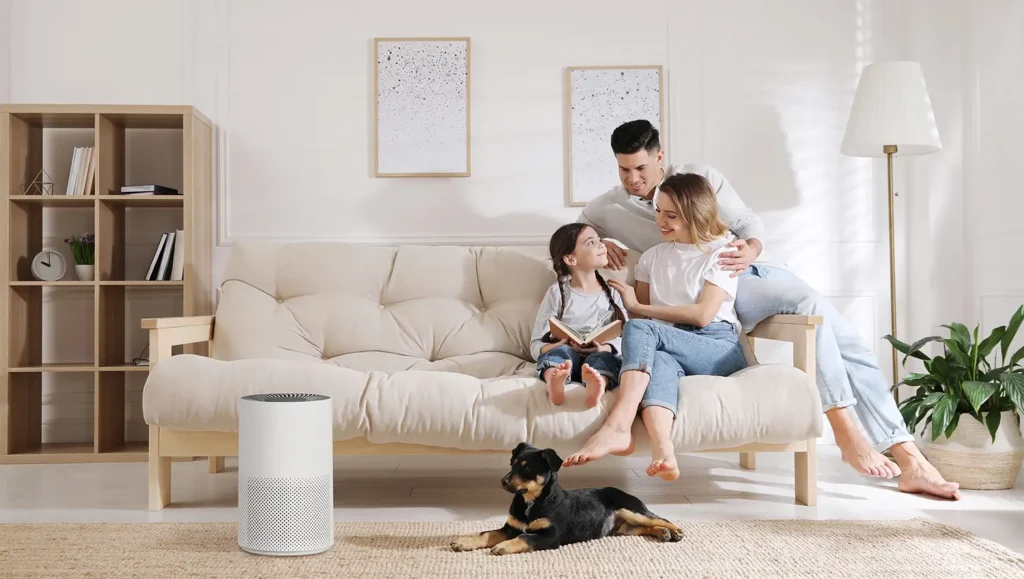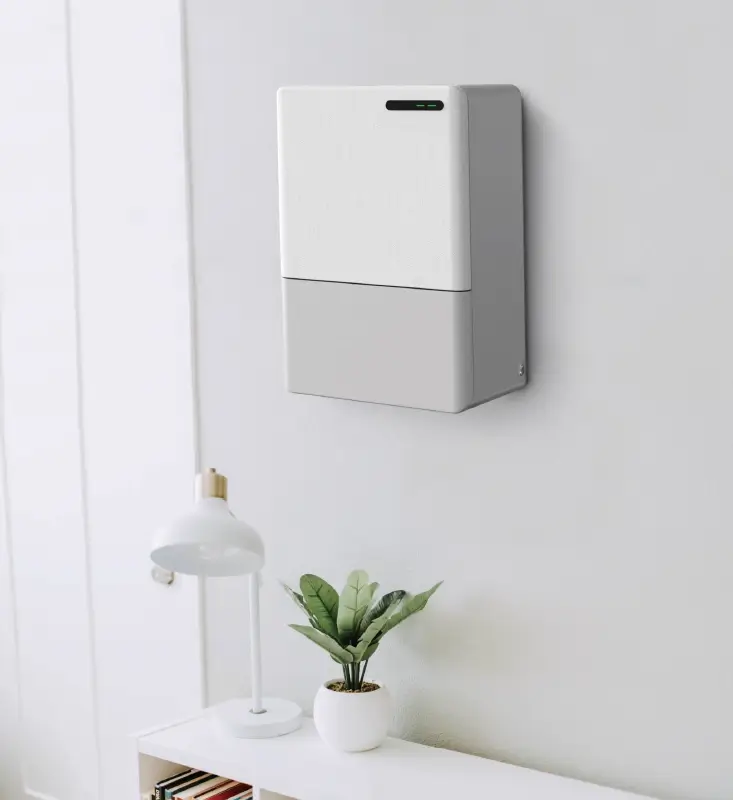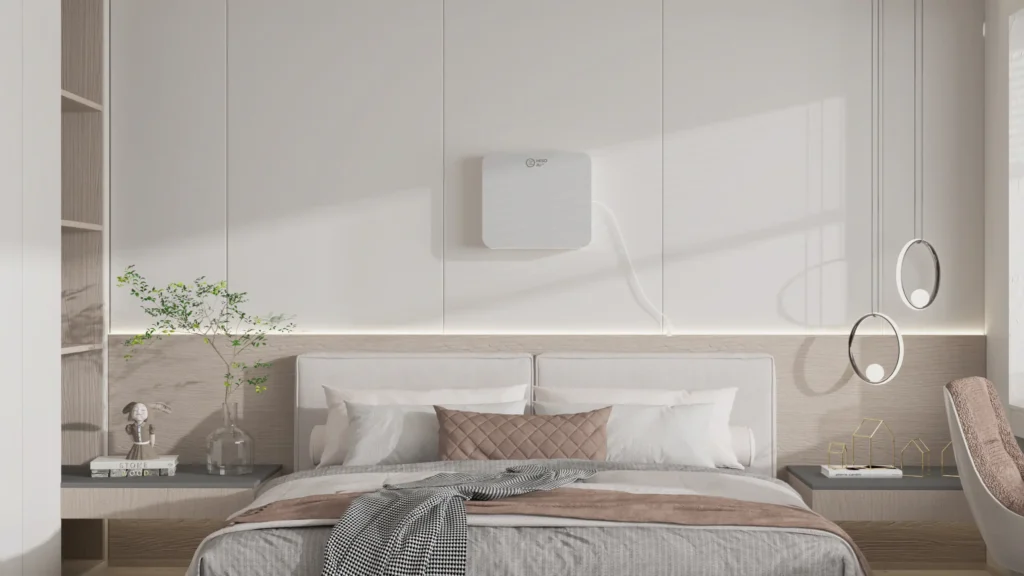Avez-vous déjà eu l'impression que vos allergies étaient trop difficiles à gérer ? Avec le pollen qui tourbillonne à l'extérieur et la poussière qui s'installe à l'intérieur, je me retrouve souvent à chercher un soulagement.
Les purificateurs d'air équipés du système True HEPA filtres can effectively remove dust, mold, and other allergens with an efficiency of 99.97%. They help alleviate allergy symptoms by capturing airborne particles as small as 0.3 microns, making them a worthwhile investment for improving indoor air quality.
Mais l'histoire ne se résume pas à l'efficacité de la HEPA filtres. Comprendre les différentes technologies et leurs applications peut vous permettre de faire le meilleur choix pour votre maison. Voyons comment fonctionnent les purificateurs d'air et ce qu'il faut prendre en compte lors de l'achat d'un purificateur.
Comment faire HEPA Les filtres fonctionnent-ils dans les purificateurs d'air ?
HEPA sont réputés pour leur grande efficacité à capturer les particules en suspension dans l'air, mais comment fonctionnent-ils exactement dans les purificateurs d'air ?
HEPA Les filtres fonctionnent en forçant l'air à passer à travers un maillage fin qui retient les particules nocives telles que la poussière, le pollen, les moisissures et les bactéries. Vrai HEPA capturent des particules aussi petites que 0,3 micron avec une efficacité de 99,97%, ce qui les rend très efficaces pour améliorer la qualité de l'air.
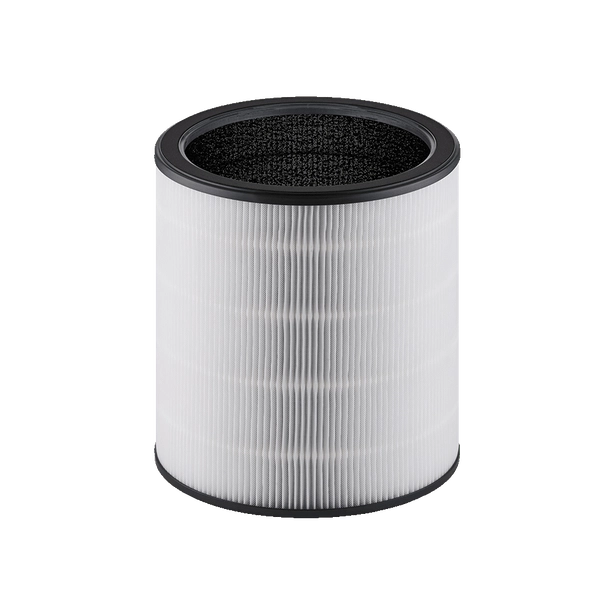
La mécanique des HEPA Filtres
HEPAou High-Efficiency Particulate Air, les filtres fonctionnent en piégeant les contaminants de plusieurs manières : interception, impaction et diffusion. Lorsque l'air traverse le filtre :
- Interception se produit lorsque les particules suivent le courant d'air et adhèrent aux fibres.
- Impaction se produit lorsque les particules les plus grosses entrent en collision directe avec les fibres.
- Diffusion affecte les particules les plus petites, les faisant se déplacer de manière erratique et finir par être piégées.
Pourquoi HEPA est efficace
La structure fibreuse en couches du HEPA leur permet de capturer des particules de différentes tailles. Cette conception unique leur permet d'éliminer la poussière, les spores de moisissure, le pollen et même certaines bactéries, qui sont des déclencheurs courants d'allergies.
Par exemple, alors que Vrai HEPA filtres1 sont certifiés pour capturer 99,97% de particules d'un diamètre de 0,3 micron, mais pas tous. HEPALes filtres de type - répondent à cette norme. Il est essentiel de comprendre cette distinction lors du choix d'un purificateur d'air.
Éléments à prendre en compte lors du choix HEPA Filtres
Lorsque vous recherchez un purificateur d'air avec un HEPA le filtre, pensez-y :
- Coûts de remplacement des filtres : Un remplacement régulier garantit des performances optimales.
- Niveaux de bruit : Certains modèles peuvent être plus bruyants lorsque les réglages sont plus élevés.
- Taille et zone de couverture : Veillez à ce que le purificateur soit adapté à la taille de votre pièce.
Un tableau comparatif peut aider à illustrer ces considérations :
| Fonctionnalité | Importance |
|---|---|
| Remplacement du filtre | Essentiel pour maintenir l'efficacité |
| Niveaux de bruit | Il faut tenir compte du fait que l'appareil sera utilisé dans une chambre à coucher. |
| Zone de couverture | Doit être adapté à la taille de la pièce pour une utilisation efficace |
En comprenant ces aspects, les consommateurs peuvent prendre des décisions éclairées lors de l'achat d'un purificateur d'air pour répondre à des besoins spécifiques.
Existe-t-il des technologies de purification de l'air qui ne sont pas efficaces contre les moisissures ?
Pour choisir le bon purificateur d'air, il faut savoir quelles technologies sont réellement efficaces contre les moisissures.
Tandis que HEPA excellent dans la capture des spores de moisissures, les technologies telles que les générateurs d'ozone et certaines lampes UV ne sont pas efficaces pour l'élimination des moisissures. Ces technologies ne traitent pas toujours les particules de moisissure en profondeur et peuvent parfois présenter des risques pour la santé si elles ne sont pas utilisées correctement. HEPA constituent un choix plus fiable en cas de problèmes de moisissures.

Comprendre les technologies des purificateurs d'air
Pour lutter efficacement contre les moisissures, il est essentiel de distinguer les différentes technologies de purification de l'air et leurs capacités. Examinons les technologies les plus courantes et leur efficacité contre les moisissures.
-
HEPA Filtres
Air à particules à haute efficacité (HEPA) sont réputés pour leur capacité à piéger les particules microscopiques, y compris les spores de moisissures, avec un taux d'efficacité allant jusqu'à 99,97%. Ils sont particulièrement efficaces car ils capturent des particules aussi petites que 0,3 micron. Ce qui fait que les HEPA-purificateurs équipés2 idéal pour les personnes souhaitant lutter contre les moisissures et autres allergènes dans leur maison.
-
Générateurs d'ozone
Les générateurs d'ozone prétendent neutraliser les odeurs et les contaminants en suspension dans l'air. Cependant, ils ne sont pas recommandés pour les moisissures car ils reposent principalement sur des interactions chimiques qui n'éliminent pas correctement les spores de moisissures. De plus, l'ozone peut provoquer des irritations respiratoires et exacerber les symptômes de l'asthme.
-
Lumière ultraviolette (UV)
Certains purificateurs d'air intègrent la technologie de la lumière UV, qui vise à détruire les micro-organismes tels que les bactéries et les virus. Bien qu'efficaces dans certaines conditions, de nombreuses lampes UV des purificateurs d'air grand public ne sont pas assez puissantes pour éliminer complètement les spores de moisissures sans un temps d'exposition prolongé, ce qui les rend moins efficaces que les purificateurs d'air classiques. HEPA des filtres.
-
Filtres à charbon actif
Le charbon actif est un excellent moyen d'éliminer les odeurs et les polluants. COV (composés organiques volatils), mais ne capture pas efficacement les spores de moisissures. La combinaison du charbon actif avec le HEPA La filtration peut améliorer la qualité de l'air, mais ne résout pas à elle seule le problème des moisissures.
-
Purificateurs d'air ioniques
Ces appareils libèrent des ions chargés qui se fixent sur les particules en suspension dans l'air et les font se déposer sur les surfaces au lieu de les inhaler. S'ils peuvent réduire la quantité de poussière en suspension dans l'air, ils n'éliminent guère les spores de moisissures directement et nécessitent un nettoyage régulier pour éviter la remise en suspension des particules.
Faire des choix éclairés
Lorsque vous choisissez un purificateur d'air, donnez la priorité à ceux qui sont dotés de la technologie True HEPA si votre principale préoccupation est l'élimination des moisissures. En outre, envisagez les modèles qui combinent HEPA avec d'autres technologies, telles que le charbon actif, pour une amélioration plus large de la qualité de l'air. N'oubliez pas que l'efficacité d'un purificateur d'air dépend également de son bon entretien et de la taille de la zone qu'il est censé desservir. L'évaluation de ces facteurs vous aidera à faire le meilleur choix3 pour vos besoins.
Quelles sont les caractéristiques à rechercher dans un purificateur d'air ?
Le choix du bon purificateur d'air peut avoir un impact significatif sur la qualité de l'air intérieur, mais quelles sont les caractéristiques à privilégier ?
Lors du choix d'un purificateur d'air, donnez la priorité à des caractéristiques telles que True HEPA des filtres, CADR les niveaux sonores et les capacités intelligentes pour garantir des performances et un confort optimaux.
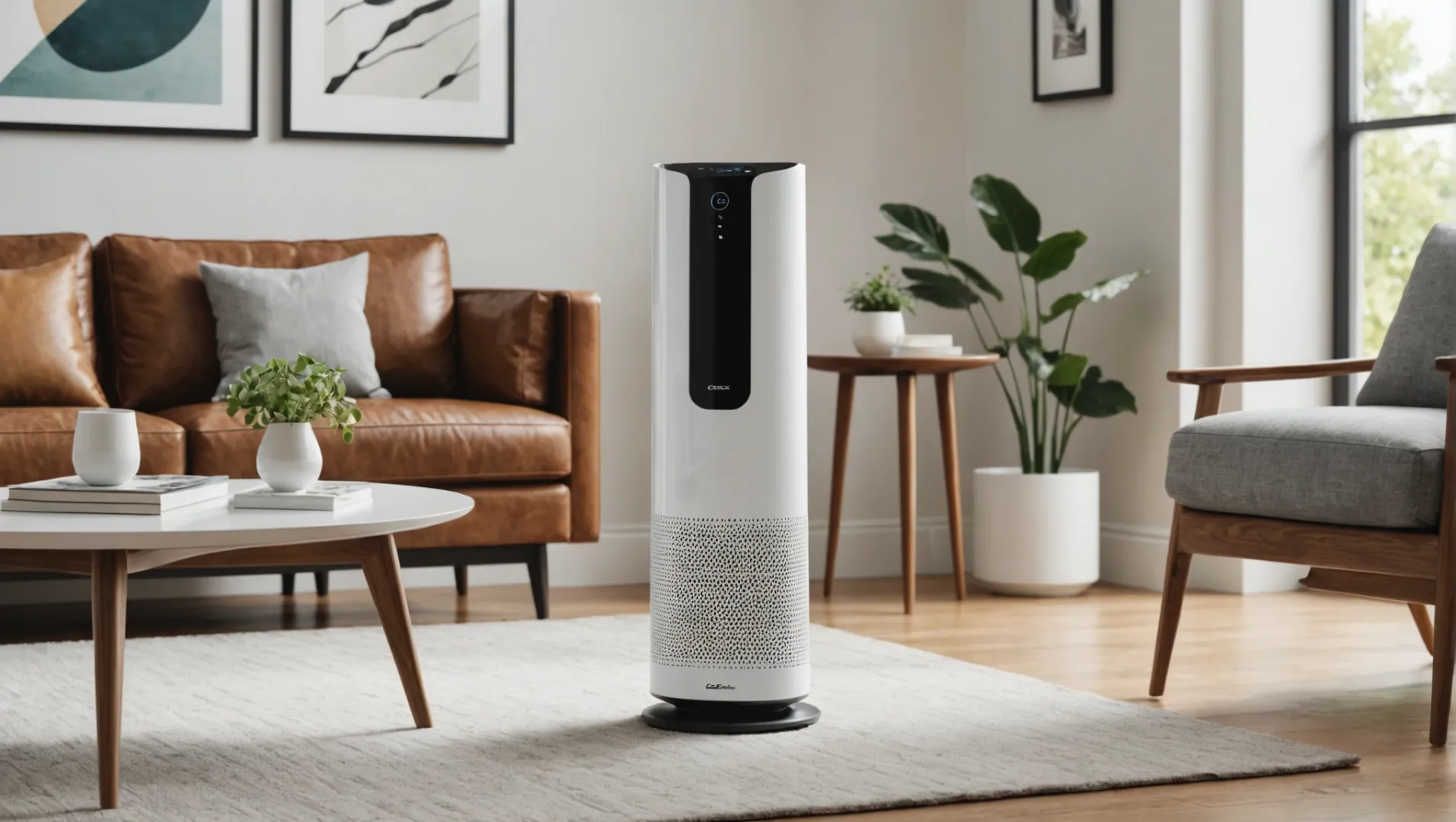
Vrai HEPA Filtres : L'étalon-or
Vrai HEPA (High-Efficiency Particulate Air) sont réputés pour leur capacité à capturer 99,97% de particules aussi petites que 0,3 micron. Ils sont donc très efficaces contre la poussière, le pollen, les spores de moisissure et d'autres allergènes. Lorsque vous achetez un purificateur d'air, assurez-vous qu'il porte la mention "True". HEPApour garantir la meilleure filtration.
CADR Notations : Comprendre la performance
Le taux de distribution d'air pur (CADR) est une mesure essentielle qui indique le volume d'air pur qu'un purificateur d'air produit par minute. Plus élevé CADR permettent de nettoyer plus rapidement les grands espaces. Recherchez des modèles avec un indice CADR pour garantir une purification efficace de l'air. Tenez compte des besoins spécifiques de votre espace lors de l'évaluation de ces caractéristiques.
| Polluant | Recommandé CADR |
|---|---|
| Fumée | 100+ |
| Poussière | 200+ |
| Pollen | 300+ |
Niveaux de bruit : Garder le silence
Le bruit peut être un facteur important, en particulier dans les chambres à coucher ou les espaces de travail. Certains purificateurs d'air fonctionnent silencieusement, tandis que d'autres peuvent être plus intrusifs. Vérifiez les niveaux de décibels (dB) indiqués par les fabricants. Les modèles dotés d'un "mode veille" ou conçus pour fonctionner silencieusement peuvent être utiles dans les environnements sensibles.
Des capacités intelligentes : La commodité au bout des doigts
Les purificateurs d'air modernes sont souvent dotés de fonctionnalités intelligentes telles que la connectivité Wi-Fi, la commande par application et la compatibilité avec l'assistant vocal. Ces fonctionnalités vous permettent de surveiller la qualité de l'air, d'ajuster les paramètres à distance et de programmer les opérations en fonction de vos besoins. De telles caractéristiques offrent une certaine commodité et garantissent le fonctionnement efficace de votre purificateur d'air.
Technologies complémentaires : Ce qui fonctionne et ce qui ne fonctionne pas
Tant que c'est vrai HEPA Bien que les filtres soient essentiels, certains purificateurs d'air intègrent des technologies supplémentaires telles que les rayons UV ou les ionisateurs. Toutefois, ces technologies ne sont pas toujours efficaces contre tous les types de polluants. Par exemple, la lumière UV est moins efficace contre les spores de moisissures et les allergènes. Évaluez la nécessité et l'efficacité de ces fonctions supplémentaires avant de prendre une décision.
Pour faire un achat en connaissance de cause, pensez à explorer HEPA comparaison de l'efficacité des filtres4 et meilleur CADR-Purificateurs d'air classés5 pour un aperçu détaillé de ces aspects cruciaux.
Les purificateurs d'air peuvent-ils aider à lutter contre les squames d'animaux domestiques et les acariens ?
Les squames d'animaux domestiques et les acariens peuvent déclencher des allergies, ce qui amène de nombreuses personnes à se demander si les purificateurs d'air peuvent les soulager.
Purificateurs d'air avec True HEPA filtres are effective in capturing pet dander and dust mites, significantly reducing allergens in the home. By trapping particles as small as 0.3 microns, these purifiers improve air quality and help alleviate allergy symptoms associated with pets and dust.
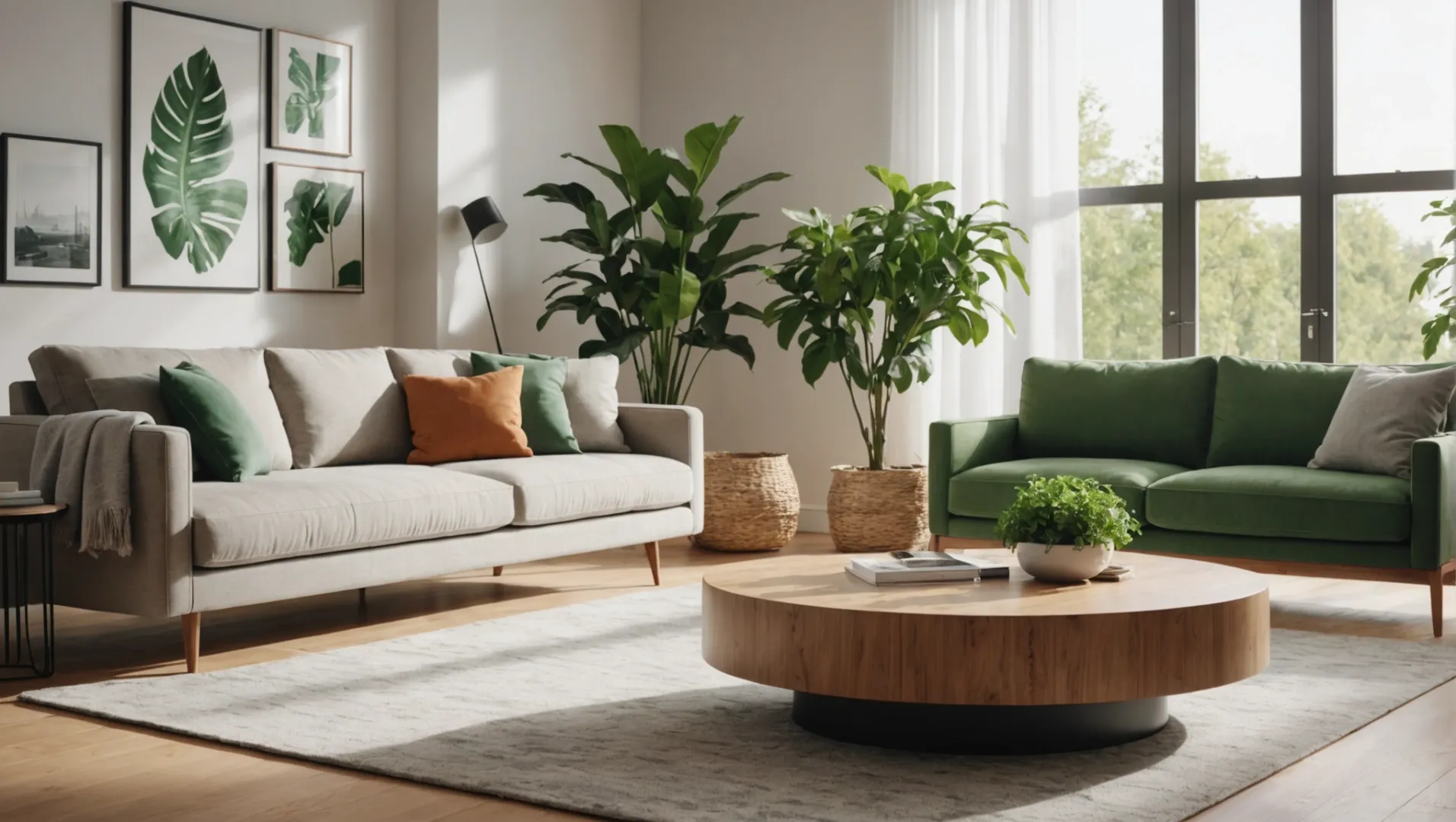
Comprendre les phanères et les acariens
Les squames d'animaux domestiques sont de minuscules, voire microscopiques, mouchetures de peau rejetées par les chats, les chiens, les rongeurs, les oiseaux et d'autres animaux à fourrure ou à plumes. Les acariens, quant à eux, sont des créatures microscopiques qui se développent dans des environnements chauds et humides et se nourrissent des cellules de la peau humaine. Ces deux types d'acariens sont des allergènes courants qui peuvent exacerber les symptômes de l'asthme et des allergies.
Le rôle des HEPA Filtres
Air à particules à haute efficacité (HEPA) sont conçus pour retenir 99,97% des particules de 0,3 micron ou plus. Il s'agit notamment des squames d'animaux et des débris d'acariens. En utilisant des purificateurs d'air équipés de filtres HEPA vous pouvez réduire de manière significative la concentration de ces allergènes dans votre maison.
Avantages :
- Soulagement des allergies : L'utilisation régulière d'un Vrai HEPA purificateur d'air6 peut atténuer les symptômes d'allergie en capturant les poils d'animaux et les particules d'acariens en suspension dans l'air.
- Amélioration de la qualité du sommeil : La réduction des allergènes permet de mieux respirer la nuit, ce qui peut améliorer la qualité du sommeil.
Autres considérations
Tandis que HEPA capturent efficacement les squames d'animaux et les acariens, ils ne peuvent pas les éliminer complètement de votre environnement. Des habitudes de nettoyage régulières, telles que l'utilisation d'un aspirateur avec un filtre à poussière, sont nécessaires. HEPA-L'aspirateur à filtre et le lavage fréquent de la literie complètent l'utilisation des purificateurs d'air.
En outre, pensez aux purificateurs d'air équipés de filtres à charbon actif pour traiter les odeurs associées aux animaux de compagnie. Cette combinaison peut améliorer la qualité globale de l'air intérieur.
Choisir le bon purificateur d'air
Lorsque vous choisissez un purificateur d'air pour lutter contre les squames d'animaux domestiques et les acariens, recherchez les caractéristiques suivantes :
- Vrai HEPA Certification : Garantit que le filtre répond aux normes strictes en matière d'élimination des particules.
- Taux de distribution d'air pur (CADR): Indique le volume d'air purifié par minute ; des chiffres plus élevés signifient un nettoyage plus rapide.
- Zone de couverture : Adaptez la capacité du purificateur à la taille de votre pièce pour obtenir des performances optimales.
En comprenant comment différents purificateurs d'air7 et leur efficacité, vous pouvez prendre des décisions éclairées pour améliorer votre environnement intérieur.
Conclusion
Investir dans un produit de qualité HEPA purificateur d'air can significantly improve indoor air quality by removing dust, mold, and allergens. Consider the technology and certification for the best results. Start breathing cleaner today!
-
Découvrez en quoi les filtres True HEPA diffèrent des autres filtres de type HEPA.. : Le filtre True HEPA se distingue par sa capacité à capturer 99,97% de particules jusqu'à 0,3 micron, ce qui en fait le choix le plus évident pour les applications critiques telles que les ... ↩
-
Comprendre comment les filtres HEPA capturent efficacement les spores de moisissures.. : Des études ont montré que les filtres HEPA éliminent entre 99,97% et 99,99% des spores de moisissures présentes dans l'air lorsqu'ils sont utilisés correctement. Les spores de moisissures qui sont piégées ... ↩
-
Découvrez les éléments clés à prendre en compte pour choisir un purificateur d'air efficace : Qu'est-ce qu'un purificateur d'air ? - Tenez compte de la taille de votre espace - Tenez compte des types de filtres - Tenez compte du bruit que fait un purificateur d'air - Tenez compte de son entretien ... ↩
-
Comprendre les variations d'efficacité des filtres HEPA et leur impact sur la qualité de l'air : Ils sont testés et certifiés pour capturer au moins 99,97% de particules aussi petites que 0,3 micron. En revanche, les filtres "de type HEPA" ou "similaires à HEPA" ... ↩
-
Découvrez des purificateurs d'air très performants avec d'excellentes notes CADR pour un air plus pur.. : Medify et Jaspr sont parmi les plus performants en termes de CADR. ↩
-
Découvrez l'efficacité et les avantages des filtres True HEPA pour l'élimination des allergènes : Les filtres True HEPA durent plus longtemps et peuvent fonctionner 24 heures sur 24, 365 jours par an. Vous pouvez éliminer efficacement la poussière, les squames d'animaux, le pollen, les moisissures, les bactéries, ... ↩
-
Découvrez les meilleurs modèles de purificateurs d'air pour lutter contre les allergies aux squames d'animaux : Les 8 meilleurs purificateurs d'air pour les poils, les odeurs et les squames d'animaux, selon nos tests. Notre liste comprend des marques de premier plan comme Dyson, Bissell et Levoit. ↩


